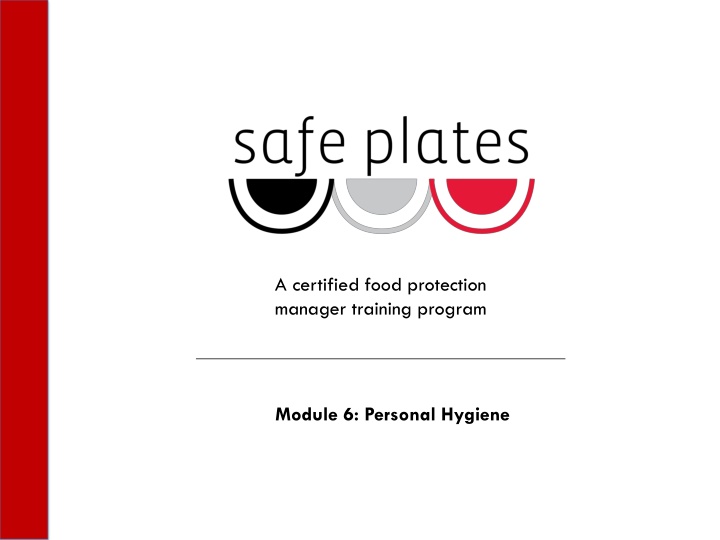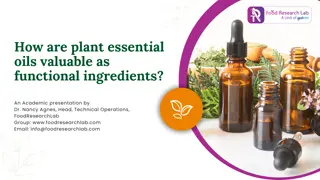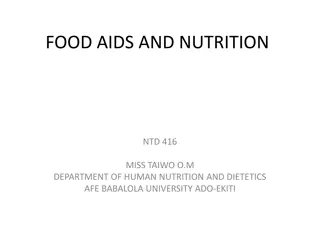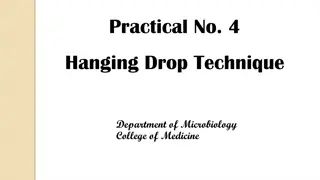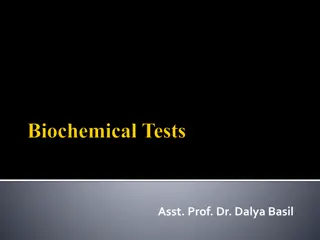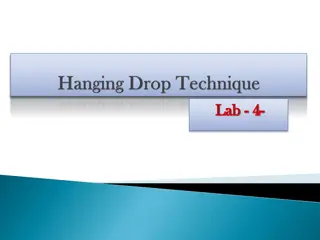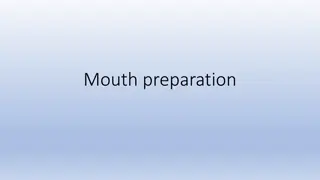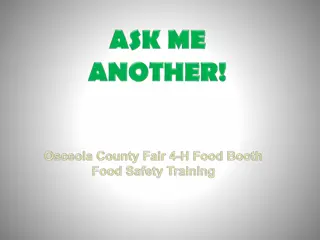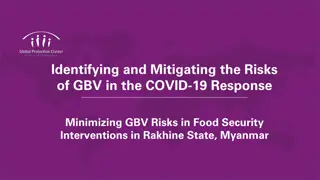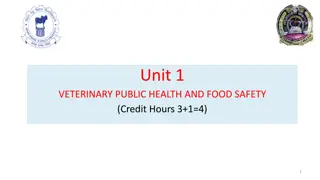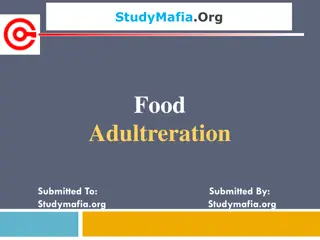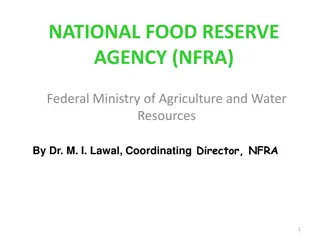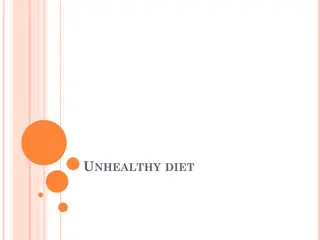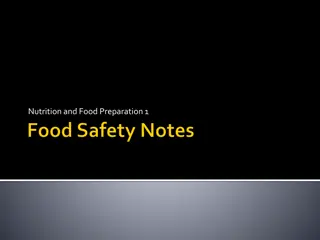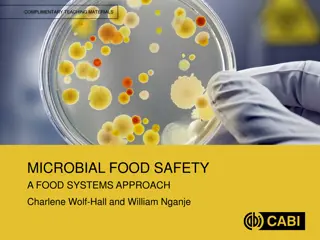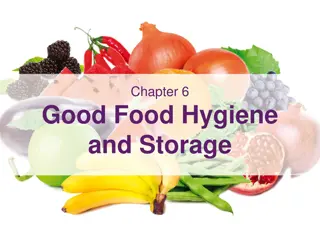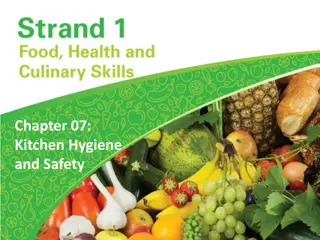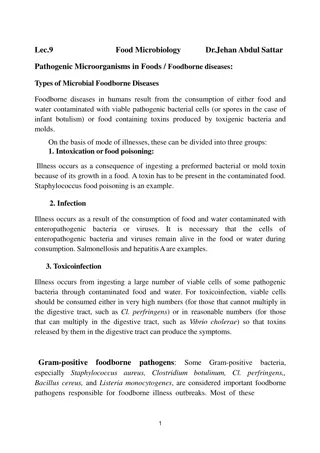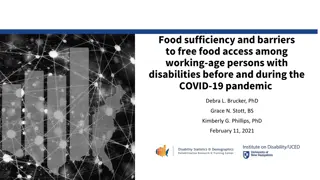Managing Staphylococcus Risks in Food Preparation
Learn about a foodborne illness outbreak linked to Staphylococcus aureus, caused by improper food handling practices. Understand the symptoms, likely causes, and prevention strategies to minimize the risk of toxin formation. Explore best practices and key terms related to food safety.
Download Presentation

Please find below an Image/Link to download the presentation.
The content on the website is provided AS IS for your information and personal use only. It may not be sold, licensed, or shared on other websites without obtaining consent from the author.If you encounter any issues during the download, it is possible that the publisher has removed the file from their server.
You are allowed to download the files provided on this website for personal or commercial use, subject to the condition that they are used lawfully. All files are the property of their respective owners.
The content on the website is provided AS IS for your information and personal use only. It may not be sold, licensed, or shared on other websites without obtaining consent from the author.
E N D
Presentation Transcript
A certified food protection manager training program Module 6: Personal Hygiene
What Happened? Military hospital Emergency Department received 13 people with gastrointestinal illness. Symptoms: Nausea, vomiting, abdominal cramps or pain, diarrhea, headache Symptoms appeared 2-3 hours after a lunch party - Everyone ate Perlo (a chicken, sausage, and rice dish) Morbidity and Mortality Weekly, December 20, 2013, Vol.62, No.50
The Recipe Frozen chicken thighs and sausage defrosted in the microwave Defrosted chicken thighs cooked in stock pot of boiling water Thighs cooled, meat removed and placed back in stock pot Sausage cooked and added to the stock pot
The Recipe (continued) Onions and other seasonings saut ed in sausage oil and added to stock pot Rice added to stock pot and cooked until all water absorbed Cooked Perlo placed in unheated oven for approximately 8 hours (overnight) Perlo transferred to slow cooker and reheated for 1 hour on high setting before transport and consumption
Likely Cause Food contained Staphylococcus aureus Could have been introduced in handling of cooked chicken or taste testing. Overnight storage of Perlo in oven (not refrigerated) allowed growth and toxin production Rewarming in slow cooker would not destroy toxin (food in TDZ) May have increased toxin production
Learning Objectives Describe best practices to reduce or eliminate the risk of Staphylococcus toxin forming Identify the symptoms and foods associated with Staph Explain the difference between a restricted and excluded employee List reasons for exclusion or restriction of employee
Key Terms Toxin Poison produced by microorganism Heat stable toxin Not destroyed by cooking (165 F) Temperature Danger Zone (TDZ) - Above 41 F and below 135 F Excluded employee - Can t work in food establishment Restricted employee - Can t work with or around food Reinstated employee - Approved to work
Staphylococcus aureus Termed staph Common in the environment Lives in humans and animals Present in nasal passages and throats Hand or arm sores (especially pus) Transmitted via cough or sneeze Can be destroyed by proper cooking Can produce toxin that is not destroyed by cooking
Toxin Staph toxin can cause nausea, stomach cramps, vomiting, and diarrhea Symptoms usually last for a few hours to a day Fast acting Causes symptoms 1-7 hours after eating contaminated foods Controlled by good personal hygiene and avoiding holding in temperature danger zone
Foods Linked to Staph Meat and meat products Poultry and egg products Salads egg, tuna, chicken, potato, macaroni Bakery products cream-filled pastries, cream pies, chocolate clairs Milk and dairy products Any food product handled after cooking
Corrective Action and Prevention Main contributing factors: Poor food handling practices (human contamination) Inadequate refrigeration of foods Using clean food preparation, storage and equipment surfaces Immediately cooling using proper techniques
Remember From Before? Temperature Danger Zone Store TCS food at or below 41 F Hot hold at 135 F or above if stored for more than 2 hours Check temperature Do you document it? Store food in small portions in shallow containers
Corrective Action and Prevention Personal Hygiene Staph is naturally present on our skin, around the mouth and nose. Open sores and cuts are problematic Proper hand washing for 20 seconds No bare hand contact Exclude employees with wounds on hands or arms (unless covered) Cover open wounds with appropriate bandages and gloves
FDA Food Code Reinstate restricted employee if skin, infected cut or boil is covered with: Impermeable cover (finger cot or stall) and single use glove if it is on hand, finger, or wrist An impermeable cover on the arm if infected wound or boil is on the arm Dry, durable, tight fitting bandage on body
Corrective Action/Prevention Personal Hygiene Hand washing, glove use Limit bare hand contact (utensils) Bathing Clean uniforms and clothes No jewelry (plain wedding band only) Hair restraint Proper taste testing practices Cough and sneeze
When Gloves are Required Handling ready to eat foods (except washing produce) Slash resistant gloves for carving/cutting Change gloves between raw and RTE Open cut or sore - remember regular hand washing
Case Study How It Happened What They Found Perlo was stored in the oven for 8 hours Poor personal hygiene 13 military personnel ill Everyone ate same meal
Case Study What Went Wrong Prevention Proper cooling and reheating Proper personal hygiene Temperature abuse allowed Staph to grow and produce toxins
Activity Write down a list of best practices to minimize the risk of Staphylococcus aureus. Remember: Personal hygiene Cross contamination Temperature Danger Zone
Quiz You see that the food handler you assigned to prepare the salad has a small cut on their hand. You should: a) Have them start preparing the salad anyway b) Move them to the meat slicing area c) Send them to see the doctor, then home for the day d) Have them put on a watertight bandage over the cut and wear gloves
Quiz You see that the food handler you assigned to prepare the salad has a small cut on their hand. You should: a) Have them start preparing the salad anyway b) Move them to the meat slicing area c) Send them to see the doctor, then home for the day d) Have them put on a watertight bandage over the cut and wear gloves
Quiz When an individual is made sick by a toxin present in the food, it is called: a) Toxin mediated infection b) Foodborne infection c) Foodborne intoxication d) None of these
Quiz When an individual is made sick by a toxin present in the food, it is called: a) Toxin mediated infection b) Foodborne infection c) Foodborne intoxication d) None of these
Summary Proper handling Proper and immediate cooling Personal hygiene Approved coverings for infected cuts, wounds Restriction and reinstatement for employees
